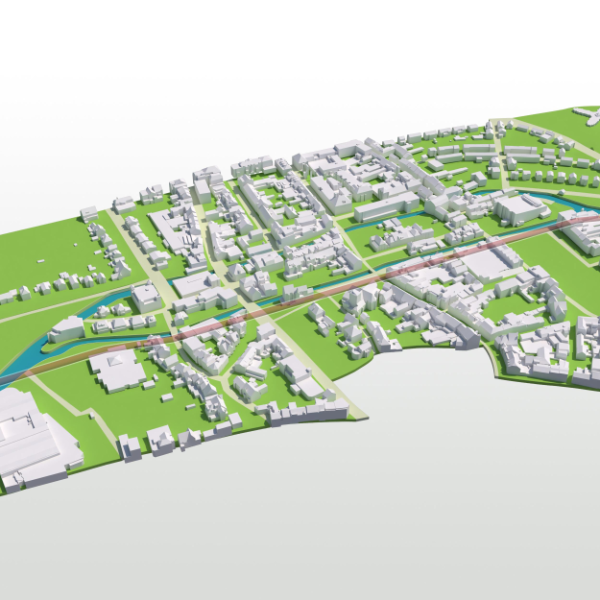Tunnel can limit flood damage in Valkenburg

Tunnel can limit flood damage in Valkenburg
In July 2021, Limburg was hit by severe flooding. Fortunately, no lives were lost in the Netherlands, but significant damage was inflicted, including in Valkenburg. This was partly due to Valkenburg's location at the bottom of a river valley, with the Geul river running through the centre of the town. The water rose above the quay walls and completely flooded the town centre, a popular tourist destination.
Jeroen de Leeuw, underground infrastructure specialist at Witteveen+Bos, recognised the characteristics of Valkenburg's situation that paralleled projects in other cities around the world. Jeroen: ‘In Switzerland, for example, tunnels have been built in a number of places to act as bypasses during floods. An underground bypass like this, forming part of a wider package of measures, could also be the answer for Valkenburg. This situation is quite unique for the Netherlands, of course, but not for mountainous areas abroad. We see this as a possible measure to prevent flooding in the future.’
Looking at the bigger picture
Herman Mondeel, water management specialist at Witteveen+Bos: ‘The rule of thumb is that a stream may flood once every 10 to 100 years. In grassland areas, frequencies around the smaller end of this range are acceptable, but in urban areas the once-in-100-years frequency is strictly held to. This means that in very extreme situations the river valley system becomes saturated and full, so flooding can still occur. The recent floods showed that things can always take a more extreme turn than you think. We have to be prepared for that. For those very extreme situations, like we saw in July 2021, we need to keep damage to a minimum.’
One way of doing this is through the design of catchment areas – for example, by introducing retention measures upstream and creating water basins and flood plains. In certain situations, however, it may be preferable to drain rainwater as quickly as possible. For appropriate measures to be taken, an analysis of the entire system is essential.
Unique location
Options in Valkenburg are limited by the location of the historic town in a narrow river valley, with houses and businesses on both sides of the Geul. The construction of a tunnel as a bypass could prove to be a cost-effective measure. The damage in Valkenburg is estimated at EUR 400 million and the impact on residents and businesses is huge. Given the relatively low cost of the tunnel compared to the extent of the damage, it represents a cost-effective measure.
One or two tunnels with a diameter of around 3.5m could capture between 30 and 60 m3/s, diverting the peak flow of a flood under Valkenburg. Further research is expected to show that this – possibly in combination with measures upstream – would be sufficient to prevent flooding in similarly extreme situations in the future. A systems analysis is required, however, to better understand the system and the potential discharges that may occur. Also, any tunnel should be hydraulically engineered, and the costs and benefits of any measures need to be carefully considered.
The proposed tunnel would result in accelerated discharge, which must not lead to additional problems downstream. This aspect also requires further investigation. At first glance, however, there would appear to be enough space between Valkenburg and the point where the Geul flows into the Meuse for appropriate measures to safely channel the water into the Meuse.
Climate change
Climate change will only increase the likelihood of flooding. We will never be able to prevent flooding completely. This means that we need to factor in the possibility of extreme situations when designing urban areas and beyond. Stress tests are already being carried out for this purpose as part of the Delta Programme for Climate Change Adaptation. These stress tests are used to assess whether a risk is acceptable or whether additional measures are required. One of these stress tests has been carried out in Valkenburg; the results show that additional measures are needed to prevent flooding as much as possible and to limit damage when flooding does occur.
Learn more?

